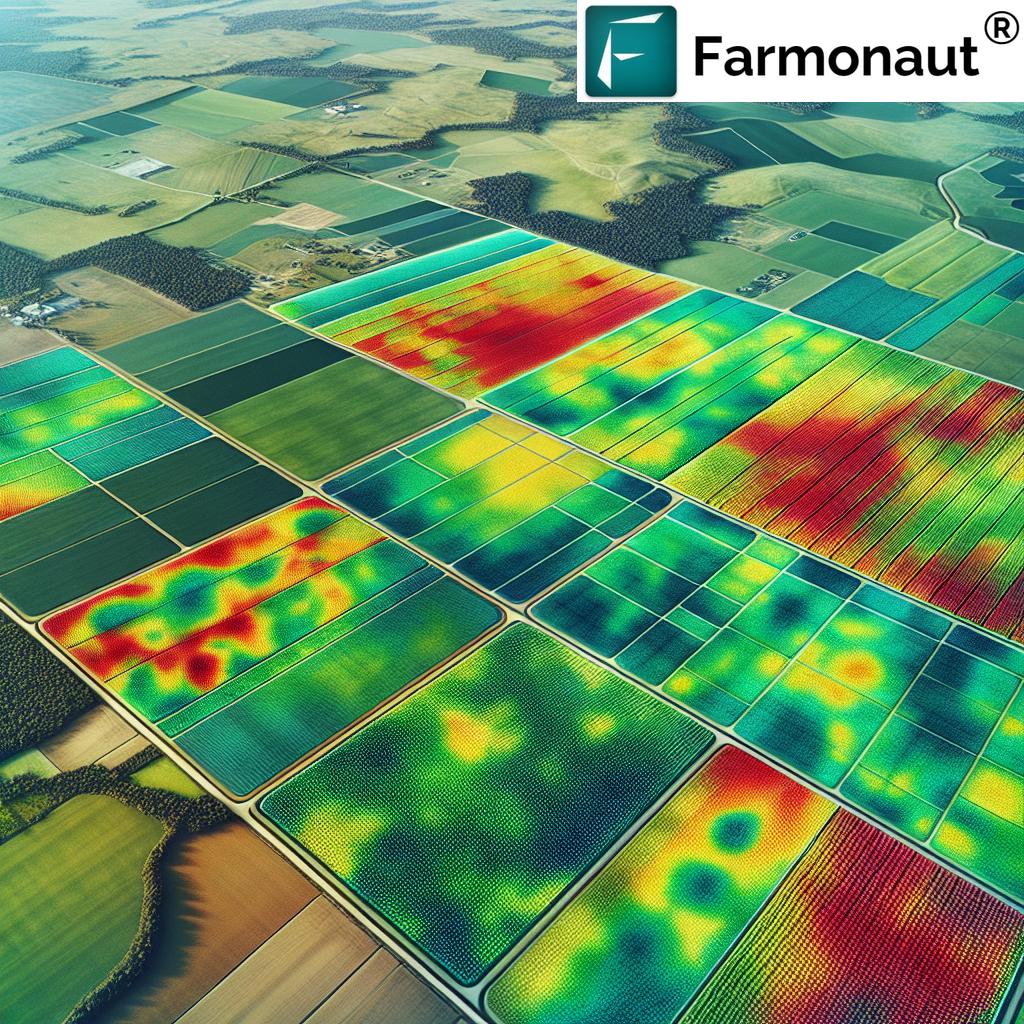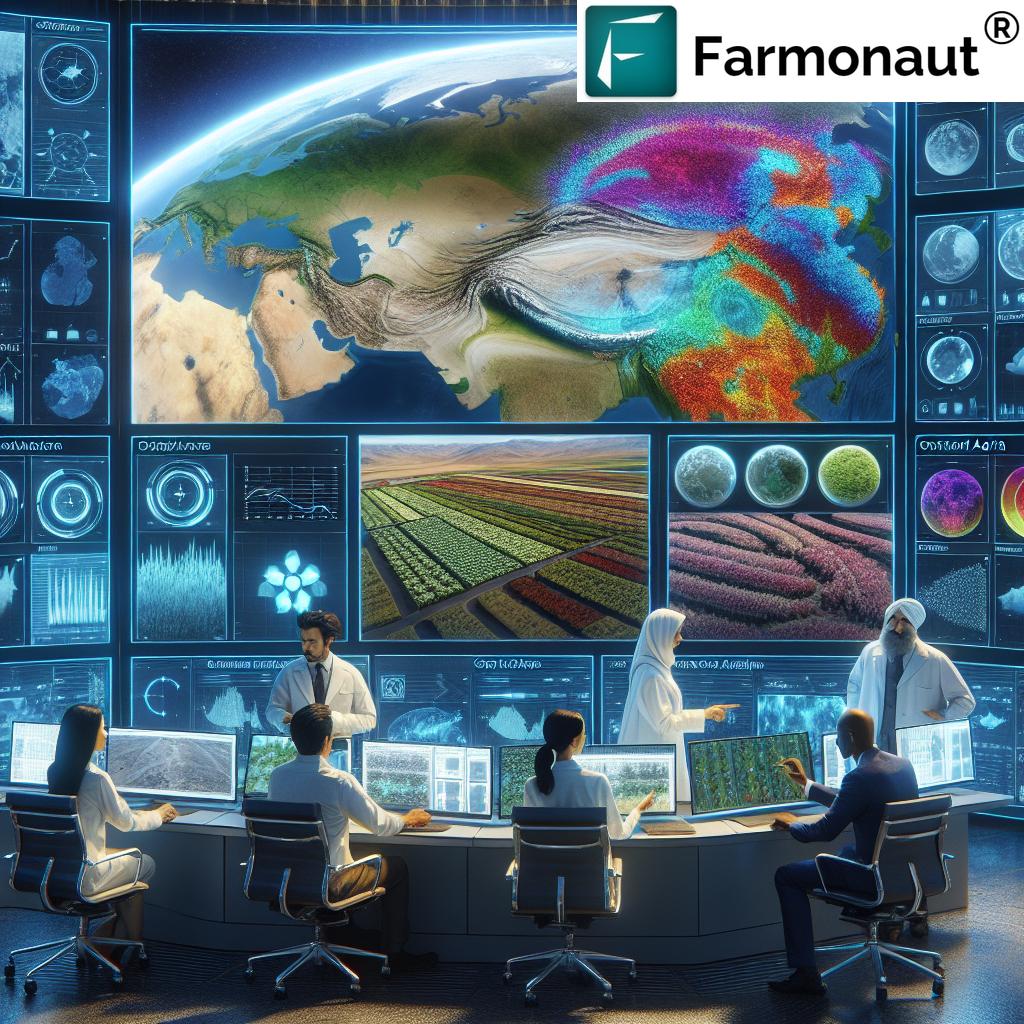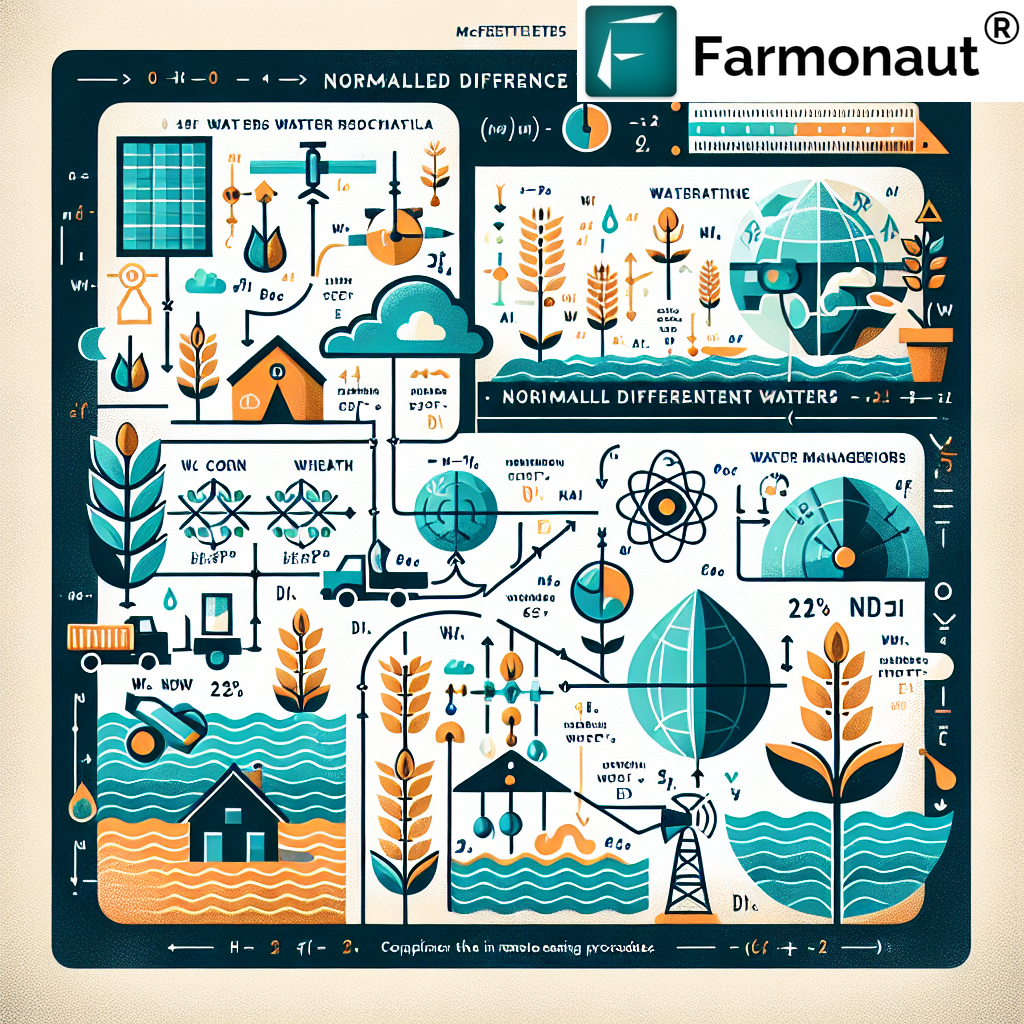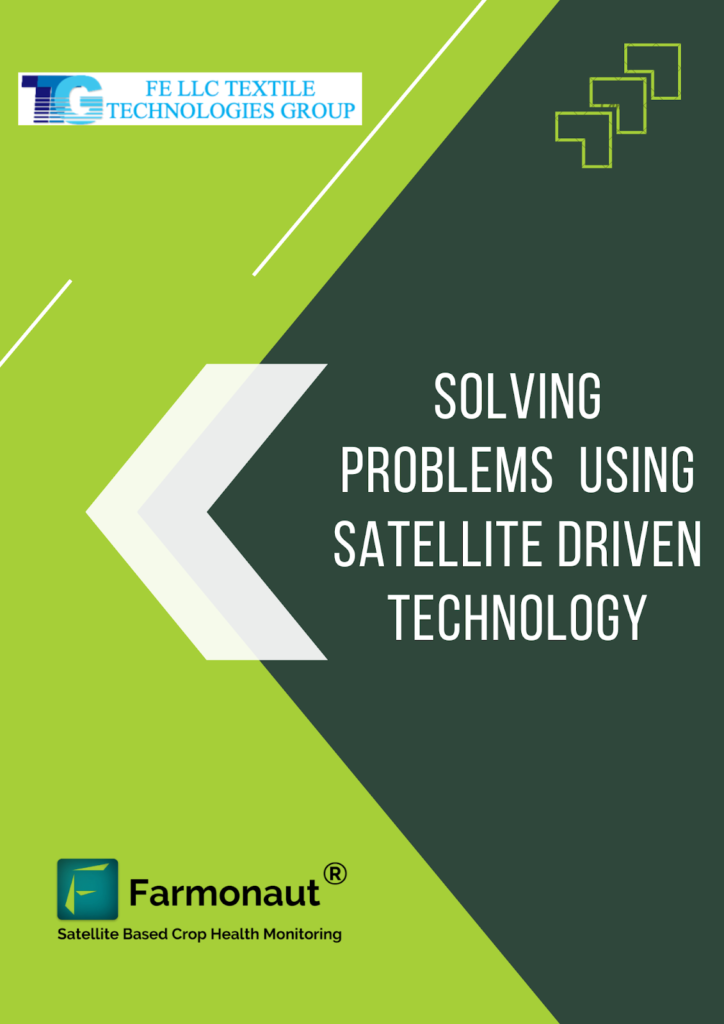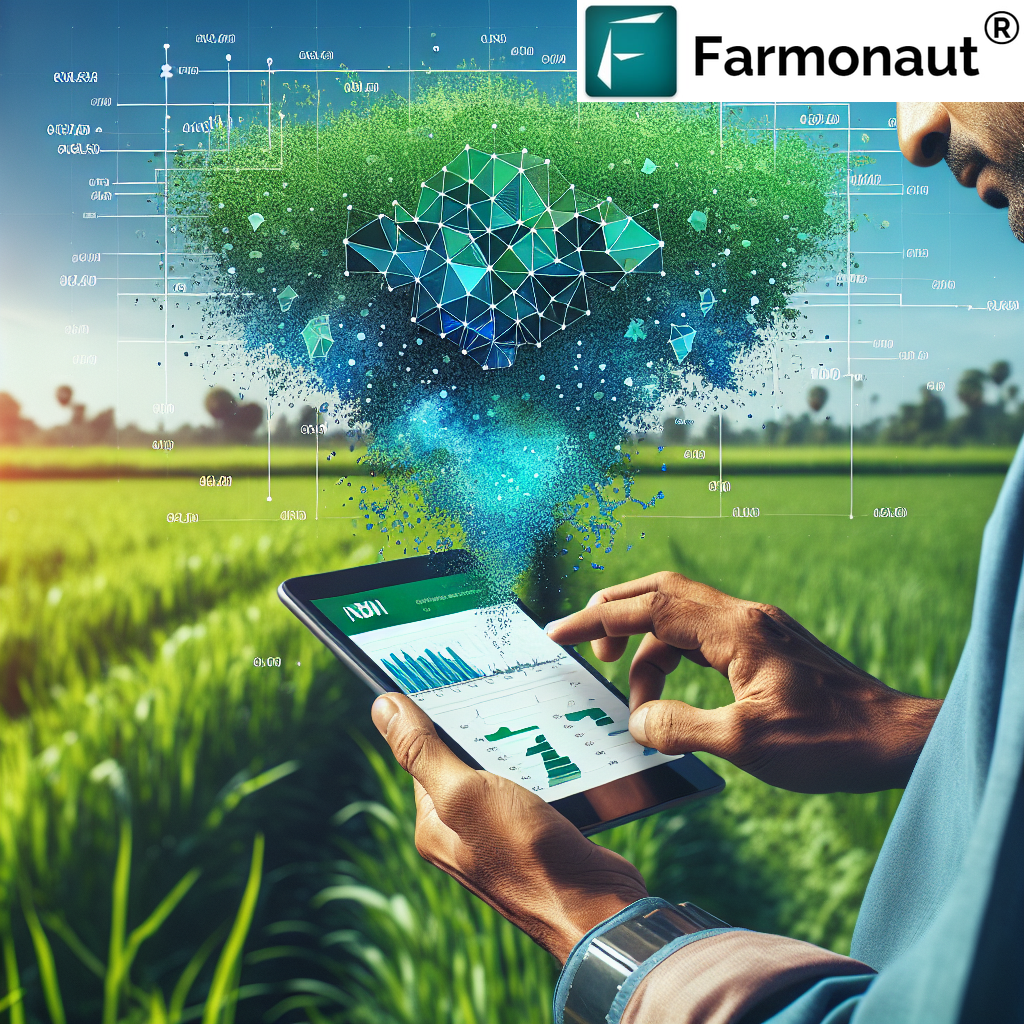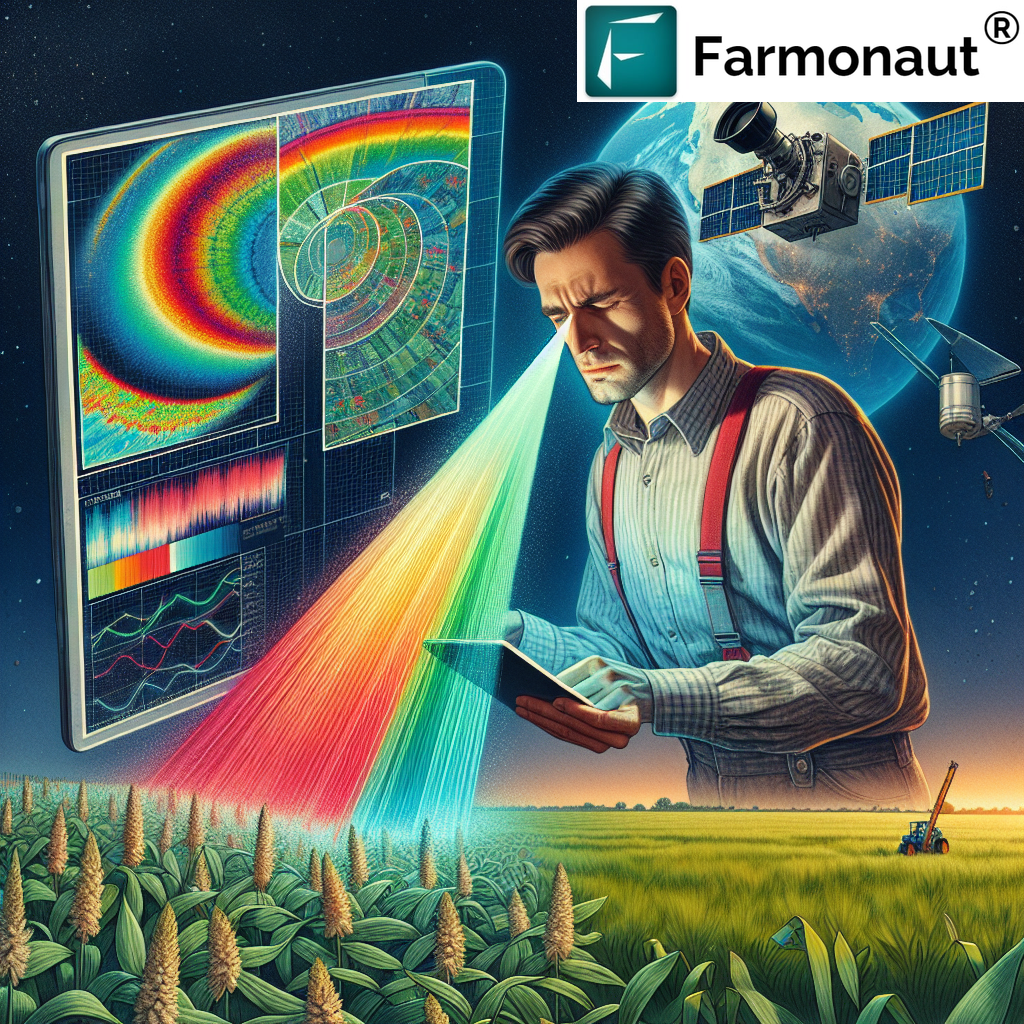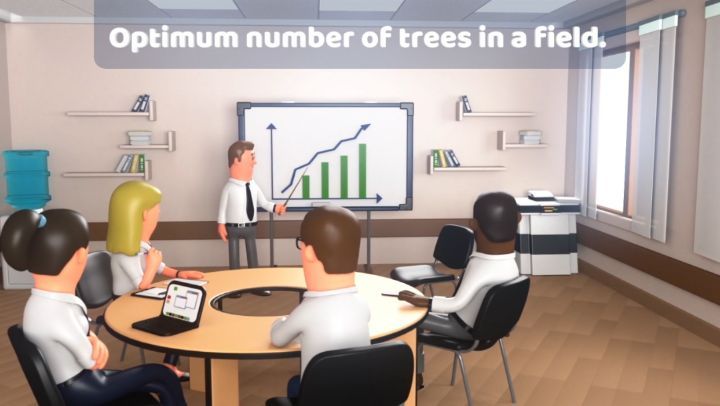Revolutionizing Agriculture: How Precision Farming and Remote Sensing are Transforming Indian Agriculture
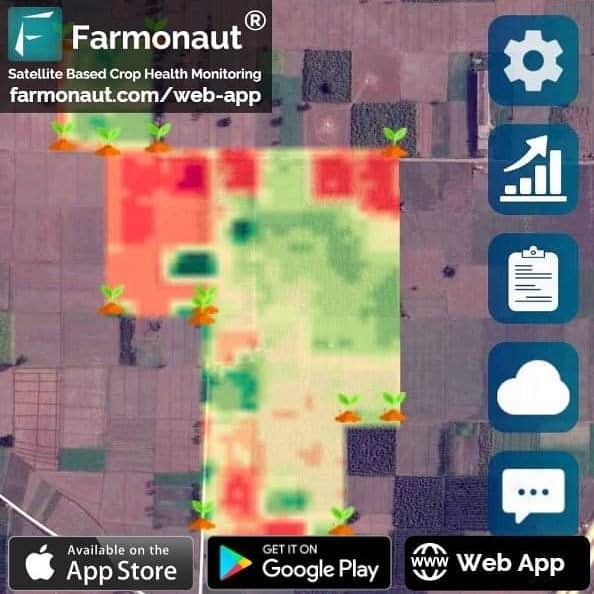
In recent years, the agricultural landscape in India has undergone significant transformations, driven by technological advancements and the pressing need for sustainable farming practices. At Farmonaut, we’re at the forefront of this agricultural revolution, leveraging cutting-edge technology to empower farmers and revolutionize the way we approach farming. In this comprehensive blog post, we’ll explore the current state of agriculture in India, focusing on crucial aspects such as fertilizer consumption, chemical usage, and the role of remote sensing and precision agriculture in shaping the future of farming.
The Current State of Fertilizer Consumption in India
Fertilizer consumption has been a key factor in India’s agricultural growth over the past few decades. Let’s take a closer look at the trends and implications:
- Rapid Growth: From 2002 to 2016, fertilizer consumption in India increased from 100.3 kilograms per hectare to 165.8 kilograms per hectare.
- Annual Growth Rate: This represents an average annual growth rate of 3.81%.
- Current Status: As of 2016, fertilizer consumption in India stood at 165.8 kilograms per hectare.
This significant increase in fertilizer usage has undoubtedly contributed to improved crop yields and food security. However, it also raises concerns about the environmental impact and the long-term sustainability of such intensive fertilizer use.
The Economic Impact of Chemical Usage in Agriculture
The use of chemicals in agriculture, including fertilizers, pesticides, and other agrochemicals, represents a substantial cost for Indian farmers. Here’s a breakdown of the economic implications:
- Price Range: Chemical prices can vary widely, ranging from 250 rupees to 2000 rupees per kilogram, depending on the specific product.
- Annual Expenditure: On average, an Indian farmer spends between 41,500 to 332,000 rupees per year on chemicals for each hectare of arable land.
- Financial Burden: This significant expenditure can be a heavy financial burden, especially for small and marginal farmers.
The high cost of chemical inputs not only affects farmers’ profitability but also raises concerns about the overuse of chemicals and their potential negative impacts on soil health and the environment.
The Role of Remote Sensing in Agriculture
At Farmonaut, we’re harnessing the power of remote sensing to revolutionize agricultural practices. Remote sensing technology offers numerous benefits for farmers and agricultural stakeholders:
- Crop Health Monitoring: Satellite imagery allows us to assess crop health across large areas, identifying potential issues before they become visible to the naked eye.
- Resource Optimization: By pinpointing areas of concern, remote sensing enables farmers to apply inputs more precisely, reducing waste and improving efficiency.
- Data-Driven Decision Making: The wealth of data provided by remote sensing empowers farmers to make informed decisions about crop management, irrigation, and pest control.
Our satellite-based crop health monitoring system at Farmonaut is designed to provide farmers with actionable insights, helping them optimize their farming practices and reduce unnecessary chemical usage.
Precision Agriculture: The Future of Farming
Precision agriculture represents a paradigm shift in farming practices, leveraging technology to optimize resource use and maximize yields. Here’s how precision agriculture is transforming the agricultural landscape:
- Targeted Interventions: By identifying specific areas of concern within a field, precision agriculture allows for targeted application of inputs, reducing waste and environmental impact.
- Data-Driven Farming: Precision agriculture relies on data from various sources, including satellite imagery, soil sensors, and weather stations, to inform farming decisions.
- Improved Efficiency: By optimizing resource use, precision agriculture can lead to significant cost savings and improved farm profitability.
At Farmonaut, our precision agriculture solutions are designed to make these advanced techniques accessible to farmers of all scales, democratizing access to cutting-edge agricultural technology.
Smart Farming: Integrating Technology for Sustainable Agriculture
Smart farming goes beyond precision agriculture, integrating various technologies to create a holistic approach to farm management. Here’s how smart farming is shaping the future of agriculture:
- IoT Integration: Smart farming leverages Internet of Things (IoT) devices to collect real-time data on various farm parameters.
- AI and Machine Learning: Advanced algorithms process vast amounts of data to provide actionable insights and predictive analytics.
- Automation: Smart farming technologies can automate various farm tasks, from irrigation to pest control, improving efficiency and reducing labor costs.
Our Jeevn AI Advisory System at Farmonaut is a prime example of smart farming technology, providing personalized recommendations based on real-time data and advanced analytics.
How Farmonaut is Transforming Agriculture
At Farmonaut, we’re committed to making precision agriculture and smart farming accessible to farmers across India and beyond. Here’s how our technology is making a difference:
- Targeted Chemical Application: Our remote sensing technology identifies areas where crop growth is not normal, allowing farmers to apply chemicals only where necessary.
- Cost Savings: By optimizing chemical use, farmers using Farmonaut can save at least 30% on chemical consumption per year.
- Significant Financial Impact: For every hectare of land, farmers can save between 12,000 rupees (~$160) and 95,000 rupees (~$1300) annually.
Our platform is available as a mobile app on both Google Play Store and Apple App Store, as well as a Web App on our website, making it easily accessible to farmers everywhere.
Comparing Farmonaut’s Satellite System with Drone and IoT-based Monitoring
| Feature | Farmonaut Satellite System | Drone-based Monitoring | IoT-based Monitoring |
|---|---|---|---|
| Coverage Area | Large scale (hundreds to thousands of hectares) | Medium scale (tens to hundreds of hectares) | Small scale (individual fields) |
| Frequency of Data Collection | Regular (every few days) | On-demand (requires manual operation) | Continuous (real-time data) |
| Initial Investment | Low (subscription-based) | High (equipment purchase) | Medium (sensor deployment) |
| Operational Costs | Low | Medium (maintenance and operation) | Low to Medium (sensor maintenance) |
| Ease of Use | High (no equipment to operate) | Medium (requires trained operators) | Medium (requires setup and maintenance) |
| Data Analysis | Advanced (AI-powered insights) | Varies (depends on software used) | Basic to Advanced (depends on system) |
The Future of Agriculture: Sustainable and Technology-Driven
As we look to the future, it’s clear that agriculture must evolve to meet the challenges of feeding a growing population while minimizing environmental impact. At Farmonaut, we believe that the integration of remote sensing, precision agriculture, and smart farming technologies is key to achieving this balance.
By providing farmers with the tools to optimize their resource use, reduce chemical inputs, and make data-driven decisions, we’re not only improving farm profitability but also promoting more sustainable agricultural practices. Our commitment to making these technologies accessible to farmers of all scales is helping to democratize precision agriculture and drive innovation across the sector.
Join the Agricultural Revolution with Farmonaut
Are you ready to transform your farming practices and embrace the future of agriculture? Join thousands of farmers who are already benefiting from Farmonaut’s innovative solutions. Visit our website to learn more about our services and how we can help you optimize your farm’s performance.
For developers and businesses looking to integrate our powerful satellite and weather data into their own systems, we offer API access. Check out our API documentation and developer resources to get started.
Subscribe to Farmonaut
Frequently Asked Questions (FAQ)
- What is Farmonaut?
Farmonaut is an agricultural technology company that provides satellite-based farm management solutions, including crop health monitoring, AI-driven advisory systems, and resource management tools. - How does Farmonaut help farmers save money?
By identifying areas where crop growth is not normal, Farmonaut enables farmers to apply chemicals only where necessary, potentially saving up to 30% on chemical consumption annually. - Is Farmonaut available on mobile devices?
Yes, Farmonaut is available as a mobile app on both Google Play Store and Apple App Store, as well as a Web App on our website. - How does remote sensing benefit agriculture?
Remote sensing allows for large-scale crop health monitoring, resource optimization, and data-driven decision making in agriculture. - What is precision agriculture?
Precision agriculture is an approach that uses technology to optimize resource use and maximize yields by applying inputs more precisely based on specific field conditions. - How does Farmonaut’s satellite system compare to drone-based monitoring?
Farmonaut’s satellite system offers larger coverage area, more frequent data collection, and lower operational costs compared to drone-based monitoring. - Does Farmonaut offer API access for developers?
Yes, Farmonaut provides API access for developers and businesses to integrate our satellite and weather data into their own systems. - How can I get started with Farmonaut?
You can download our app from the Google Play Store or Apple App Store, or use our Web App. Visit our website for more information on getting started.
As we continue to innovate and expand our services, we remain committed to our mission of making precision agriculture accessible and affordable for farmers worldwide. Join us in shaping the future of agriculture – a future that is sustainable, efficient, and technology-driven.
Happy Farming!


